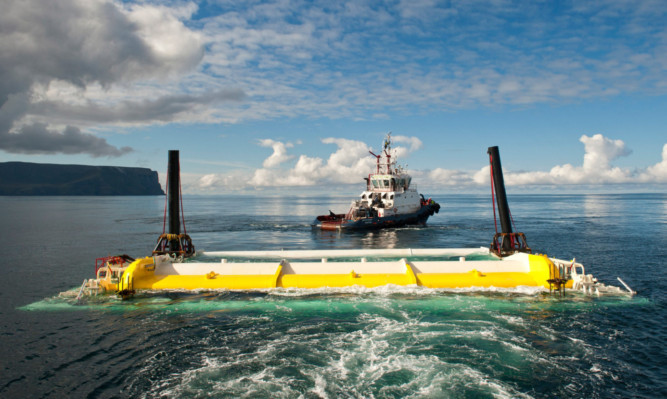The world’s largest single commercial wave array is to be constructed in Scottish waters after regulators gave the green light to the 40MW development.
Edinburgh-based Aquamarine Power hailed the move as a milestone for the wave industry, but the ultimate success of the project is dependent on the upgrading of grid infrastructure connecting the mainland to the Isles.
Western Isles Council has approved planning for a local onshore hydroelectric power plant to be connected to Aquamarine’s array but it is likely to be 2017 at the earliest before work on an interconnector for the Western Isles is completed, allowing full power transmission.
Aquamarine said it “ultimately” expected to deploy up to 50 of its Oyster devices in the array off the north-west coast of Lewis.
The company’s full-scale Oyster 800 device, which is undergoing testing at the European Marine Energy Centre (EMEC) in Orkney, was built by Fife-based Burntisland Fabrications at its Arnish yard.
Approvals for the array which is being taken forward by Aquamarine subsidiary Lewis Wave Power, and which could eventually provide enough power for 30,000 homes were announced by Energy Minister Fergus Ewing at the start of the All-Energy conference in Aberdeen on Wednesday.
“The goal of our industry is to become commercial, and to do this we need two things: reliable technologies and a route to market,” Aquamarine Power chief executive Martin McAdam said.
“Our engineers are currently working hard on getting the technology right and we now have a site where we can install our first small farm, with a larger-scale commercial build out in the years ahead.
Scottish Renewables chief executive Niall Stuart said it was an exciting development, but warned that producing power in remote locations had to be economically viable.
He said: “We can’t forget that this is the kind of prize that could be lost unless costs for projects to connect to the grid on the islands are set at a competitive level.”
Maria McCaffery, chief executive of RenewableUK added: “These are the type of developments that we hope to see more of in the coming months and years to herald the opportunity that marine energy represents.”
